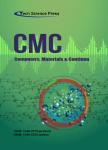Resource Allocation and Optimization in Device-to-Device Communication 5G Networks
作者机构:Computer Engineering DepartmentUmm Al-Qura UniversityMecca24381Saudi Arabia Department of Electrical EngineeringUniversity of Engineering and Technology PeshawarP.O.B.814Pakistan Tecnologico de MonterreySchool of Engineering and SciencesZapopan45201Mexico Department of Computer ScienceAbbottabad University of Science and TechnologyHavelian22500Pakistan Department of Information TechnologyHazara University MansehraMansehra21120Pakistan School of Electrical and Computer EngineeringSeoul National UniversitySeoul08826Korea
出 版 物:《Computers, Materials & Continua》 (计算机、材料和连续体(英文))
年 卷 期:2021年第69卷第10期
页 面:1201-1214页
核心收录:
学科分类:0809[工学-电子科学与技术(可授工学、理学学位)] 08[工学]
主 题:5G networks D2D communication resource allocation
摘 要:The next-generation wireless networks are expected to provide higher capacity,system throughput with improved energy *** of the key technologies,to meet the demand for high-rate transmission,is deviceto-device(D2D)communication which allows users who are close to communicating directly instead of transiting through base stations,and D2D communication users to share the cellular user chain under the control of the cellular *** a new generation of cellular network technology,D2D communication technology has the advantages of improving spectrum resource utilization and improving system throughput and has become one of the key technologies that have been widely concerned in the ***,due to the sharing of cellular network resources,D2D communication causes severe interference to existing cellular *** of the most important factors in D2D communication is the spectrum resources utilization and energy consumption which needs considerable attention from research *** address these issues,this paper proposes an efficient algorithm based on the idea of particle swarm *** main idea is to maximize the energy efficiency based on the overall link optimization of D2D user pairs by generating an allocation matrix of spectrum and *** D2D users are enabled to reuse multiple cellular user’s resources by enhancing their total energy efficiency based on the quality of service constraints and the modification of location and speed in particle *** constraint also provides feasibility to solve the original fractional programming *** results indicate that the proposed scheme effectively improved the energy efficiency and spectrum utilization as compared with other competing alternatives.




